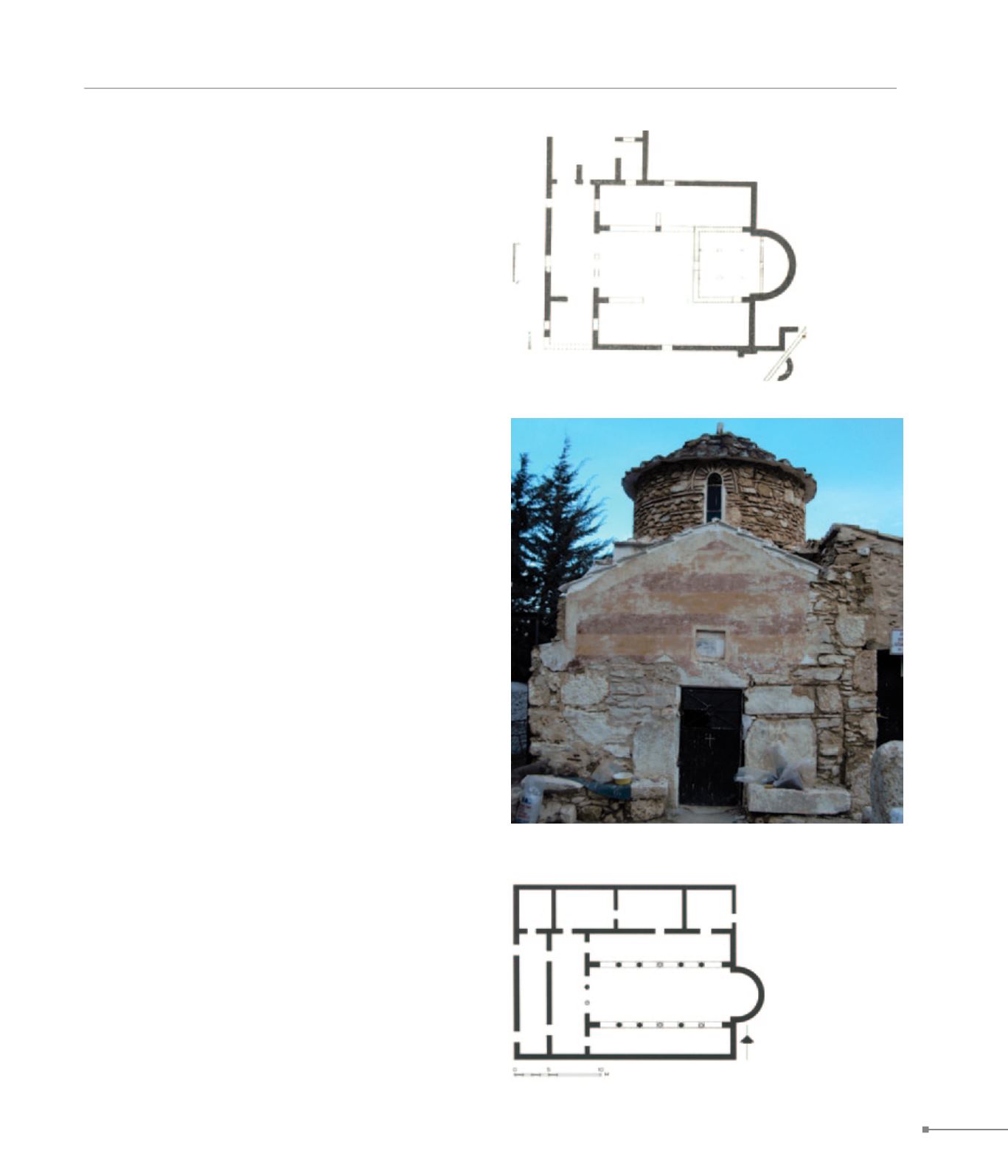
Monastery of Saint John Kynegos.
Spata.
CENTRAL GREECE
191
241.
Monastery of Saint John Kynegos.
The monastery of Saint John Kynegos, on the ΝΕ end of the
Hymettos mountain range, was established in the early 13th
c. by monk Luke and a member of the Philosophon family,
who are identified with historical figures referred to by Michael
Choniates. From the original complex survive the catholicon, a
two-columned, cross-in-square church (early 13th c.) with pos-
terior narthex, and an arched portal of the same period. The es-
timated age of the church is based on a relief lintel bearing the
date 1205. The first building phase of Aghia Thekla at Stavros,
near Kynegos, possibly dates to the Late Byzantine period, as
has been recently indicated, and was a simple cross-in-square
church. Within the church enclosure has been placed the “Neo-
phytus’ Column”, an unfluted marble column with an inscrip-
tion referring to the opening of a road by monk Neophytus in
1238. At the Goupi site at Stavros survive the remains of Saint
John Theologos, a contracted Mid-Byzantine cross-in-square
church.
242.
Paiania.
In the Paiania region, two Early Christian basilicas have been
detected at the site of the subsequent churches of Aghios Atha-
nasios and Aghia Paraskevi. Excavations of the former have
indicated that it was three-aisled, while the latter preserves the
semi-dome incorporated in the Post-Byzantine church. The
contracted, cross-in-square church of Saint Nicholas at Cha-
lidou, and Aghia Triada, an aisleless church with narthex, date
from the Mid-Byzantine period and preserve wall-paintings of
the late 12th c. The first phase (triconch) of Palaiopanagia in
Kantza dates from the 12th c. and retains a scene of the As-
sumption, possibly Palaeologan.
243.
Spata.
At the Skympti site, Spata, a three-aisled basilica with double
narthex and long annex has been excavated on the N side.
The floor of the nave, of clay slabs, attests to the simple interior
and decoration of the church. At the site of the Post-Byzantine
church of Saint Peter remains of rural settlement inhabited from
the 11th-14th c. have been excavated, as well as a cemetery in
use in the same period.
243. Spata, basilica
at Skympti, ground
plan (Σπάτα, βασιλική
στη θέση Σκύμπτη,
κάτοψη)
242. Paiania, Saint Nicholas at Chalidou (Παιανία, Άγιος Νικόλαος στη
Χαλιδού)
242. Paiania,
basilica
at Aghios
Athanasios,
ground plan
(Παιανία, Άγιος
Αθανάσιος,
κάτοψη της
βασιλικής)


